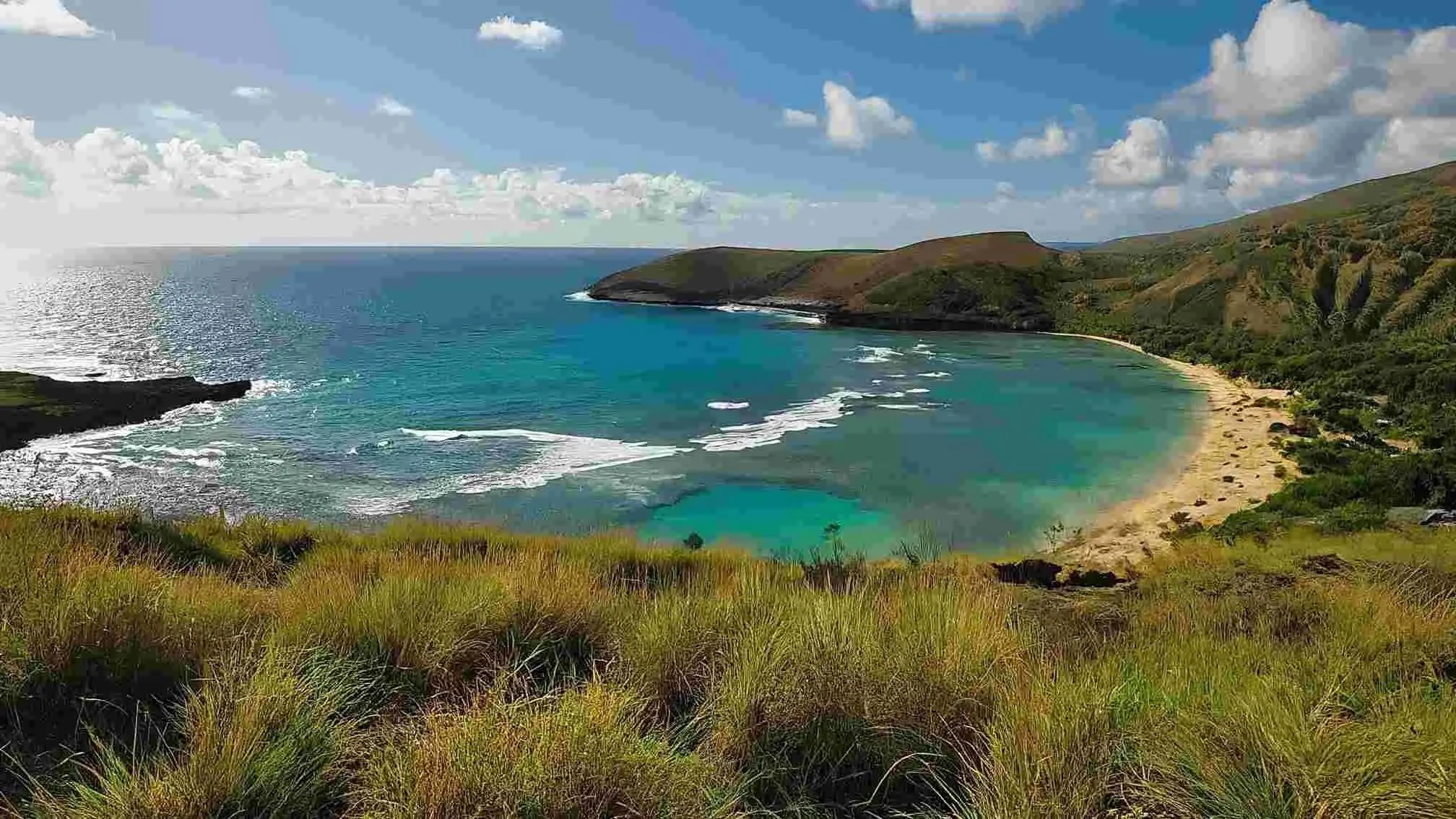
1. Hawaii Island (Big Island)
Known as the “Island of Volcanoes,” Hawaii Island is home to five majestic volcanoes and boasts awe-inspiring volcanic activity. Unlike other volcanoes, the eruptions here are relatively safe and draw countless visitors eager to witness the grandeur of nature’s forces.
Top Attractions
- Black Sand Beach (Punalu’u Beach):
While we often picture sandy beaches as pristine white, Big Island’s Punalu’u Beach offers a striking contrast. Its black sand, formed from volcanic lava flows, creates a dramatic juxtaposition against the azure sky and turquoise waters. The beach’s unique texture and warmth underfoot make it a must-visit, and it’s a perfect spot for sunbathing.
- Waipi’o Valley:
This sacred valley offers an extraordinary experience of seclusion and natural beauty. Home to native Hawaiian residents who live off the land without modern conveniences like cell service or TV, the valley feels like a journey to another world. It’s no surprise that Hawaiians have long considered this valley a holy place.
- Mauna Kea Volcano:
The highest peak on Hawaii Island, Mauna Kea is one of the most Mars-like terrains on Earth, often used as a filming location for space-themed movies. Despite its harsh environment, it’s a global hotspot for stargazing. Recognized as one of the world’s best stargazing locations by the International Dark-Sky Association, Mauna Kea offers breathtaking, crystal-clear views of the Milky Way. The Mauna Kea Observatory provides telescopes and guided stargazing experiences.
Beyond these highlights, the island also features luxury resorts, world-class golf courses, charming towns, and significant historical sites, making it a paradise of both natural wonders and cultural richness.
2. Maui
The second-largest Hawaiian island, Maui is a land of endless diversity, featuring everything from sun-soaked beaches and lush rainforests to fertile valleys and desolate volcanic landscapes.
Top Attractions
- Iao Valley State Park:
This serene, green valley in Central Maui is considered sacred by locals. It’s famed for the dramatic Iao Needle, a steep, spire-like rock formation that rises prominently from the lush valley floor. Historically, this was a battleground where King Kamehameha I defeated Maui’s warriors.
- Lahaina Whaling Town:
This historic town was once the capital of the Hawaiian Kingdom and a bustling whaling port. Today, it offers a charming blend of cultural heritage and natural beauty. Its picturesque streets lined with tropical flora provide a glimpse into Hawaii’s past. During whale season, you can often spot humpback whales from the shores.
- Haleakalā National Park:
Maui’s highest peak, Haleakalā, rises to 3,055 meters (10,023 feet) above sea level and offers a surreal experience. Visitors often hike or drive to the summit to witness the unforgettable sunrise. Every sunrise here is unique, and even seasoned visitors describe each experience as extraordinary.
3. Oahu
As the most populous island in Hawaii, Oahu combines traditional Hawaiian culture with the vibrant energy of a modern metropolis. The island is home to Honolulu, the state’s capital, often referred to by Chinese speakers as “檀香山” (Sandalwood Mountain).
Top Attractions
- Waikiki Beach:
A symbol of Honolulu, Waikiki Beach features powdery white sand, swaying palm trees, and tranquil waters. It’s a hub for water sports, relaxation, and experiencing the warmth of Hawaiian hospitality.
- Hanauma Bay:
This crescent-shaped bay is a snorkeling paradise, named for its resemblance to a sleeping dinosaur. The shallow, calm waters are teeming with marine life, making it an ideal spot for snorkeling among vibrant coral reefs and tropical fish.
- Pearl Harbor:
Located on the island’s southern coast, Pearl Harbor is both a naval base and a historic site. The USS Arizona Memorial and museum offer a moving exploration of the events that led the U.S. into World War II.
- Diamond Head Crater:
This extinct volcanic crater is one of Hawaii’s most iconic landmarks. A 40-minute hike takes you to the summit, where sweeping views of Waikiki and Oahu’s southern coastline await.
Final Thoughts
Hawaii offers an unparalleled mix of natural beauty, cultural richness, and warm hospitality. Whether marveling at volcanic landscapes, exploring lush rainforests, or immersing yourself in the laid-back island lifestyle, Hawaii’s three main islands promise a once-in-a-lifetime adventure.
